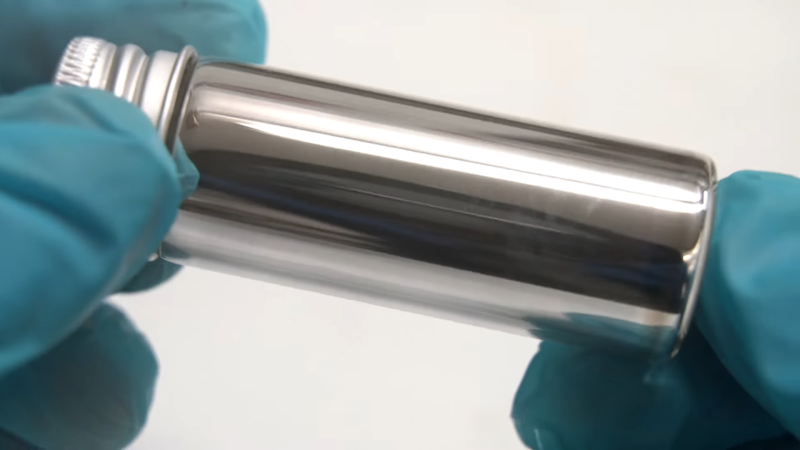We’ve been eagerly following [ProjectsInFlight]’s stepwise journey toward DIY semiconductors, including all the ups and downs, false leads, and tedious optimizations needed to make it possible for the average hacker to make chips with readily available tools and materials.
Next up is metallization, and spoiler alert: it wasn’t easy. In a real fab, metal layers are added to chips using some form of deposition or sputtering method, each of which needs some expensive vacuum equipment. [ProjectsInFlight] wanted a more approachable way to lay down thin films of metal, so he turned to an old friend: the silver mirror reaction. You may have seen this demonstrated in high school chemistry; a preparation of Tollen’s reagent, a mix of sodium hydroxide, ammonia, and silver nitrate, is mixed with glucose in a glass vessel. The glucose reduces the reagent, leaving the metallic silver to precipitate on the inside of the glass, which creates a beautiful silvered effect.
Despite some issues, the silvering method worked well enough on chips to proceed on, albeit carefully, since the layer is easily scratched off. [ProjectsInFlight]’s next step was to find an etchant for silver, a tall order for a noble metal. He explored piranha solutions, which are acids spiked with peroxide, and eventually settled on plain old white vinegar with a dash of 12% peroxide. Despite that success, the silver layer was having trouble sticking to the chip, much preferring to stay with the photoresist when the protective film was removed.
The solution was to replace the photoresist’s protective film with Teflon thread-sealing tape. That allowed the whole process from plating to etching to work, resulting in conductive traces with pretty fine resolution. Sure they’re a bit delicate, but that’s something to address another day. He’s come a long way from his DIY tube furnace used to put down oxide layers, and suffering through the search for oxide etchants and exploring photolithography methods. It’s been a fun ride so far, and we’re eager to see what’s next.
Thanks to [Måns Almered] for the tip.


















Impressive but I certainly hope he improves the process. However, I think I would have gone with making a a sputtering machine because it can easily be reused for many different things and doesn’t require a hard vacuum. On the downside it’s slow and high-energy. I’m still interested to see how this pans out.
Indeed, compared to the rest of the fab efforts already put in a vapour deposition system really doesn’t seem like much work. So I was very much expecting that route when he got this far. Though its nice to see this method tried and worked with anyway, continually impressive how far into a high complexity industry one individual can go with this level of determination and skill.
I’m remembering one of the standard Amateur Telescope Making books having a section on aluminizing your own mirror. (Silvering was the standard, but silver tarnishes so quickly.)
I’m remembering a suspended coiled filament with aluminum foil flags draped over it.
I’m NOT remembering what they used to pull the vacuum, but it may have been a homebrew mercury-diffusion pump, backed by a conventional rotary roughing pump. Different times.
The fun will start when actually trying to contact silicon as well…
There are specialized metallization pastes that are used to contact solar cell. They have plenty of “magic” ingredients. I don’t know how difficult it is to get hold of those.
E.g. this
https://www.heraeus.com/en/hpt/product_selector_3/product_selector_hpt.html
https://www.monocrystal.com/catalog/paste/